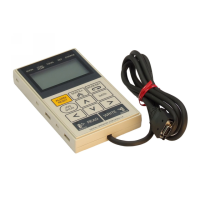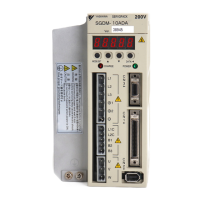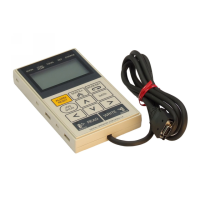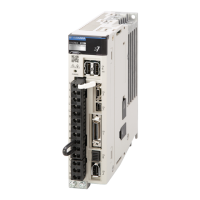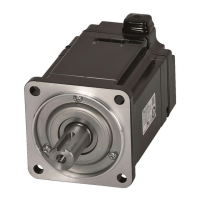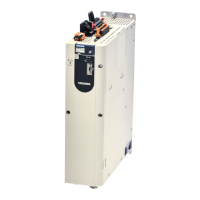8 Adjustments
8.4.2 Advanced Autotuning by Reference Procedure
8-44
Vibration Suppression
The vibration suppression function suppresses transitional vibration at frequency as low as 1 to 100 Hz that is
generated mainly when positioning if the machine stand vibrates.
Usually, set this function to Auto Setting. (The vibration suppression function is factory-set to Auto Setting.)
When you set this function to Auto Setting, vibration will be automatically detected during autotuning with a
host reference and vibration suppression will be automatically adjusted and set. Set this function to Not Auto
Setting only if you do not change the setting for vibration suppression before executing autotuning with a host
reference.
Note: This function uses model following control. Therefore, the function can be executed only if the mode selection is set
to 2 or 3.
Friction Compensation
This function compensates for changes in the following conditions.
• Changes in the viscous resistance of the lubricant, such as the grease, on the sliding parts of the machine
• Changes in the friction resistance resulting from variations in the machine assembly
• Changes in the friction resistance due to aging
Conditions to which friction compensation is applicable depend on the mode.
*1. The friction compensation function is always enabled regardless of the friction compensation setting in
Pn408.3.
* 2. For details on Pn408.3, refer to 8.8.2 (1) Required Parameter Settings.
Feedforward
If Model Following Control Related Switch (Pn140) is set to the factory setting and the mode selection is set
to 2 or 3 when autotuning is executed, the feedforward gain (PnAC8), speed feedforward (VFF) input, and
torque feedforward (TFF) input will be disabled.
Set Pn140.3 to 1 if model following control is used together with the speed feedforward (VFF) input and
torque feedforward (TFF) input from the host controller.
Refer to the
Σ
-V-MD Series User’s Manual MECHATROLINK-III Standard Servo Profile Commands (Manual
No.: SIEP S800001 03) for information on the speed feedforward (VFF) input and torque feedforward (TFF)
input.
Parameter Function When Enabled Classification
Pn140
n.0
Does not use the vibration suppression function
automatically.
Immediately Tuning
n.1
[Factory setting]
Uses the vibration suppression function automati-
cally.
Mode Selection Setting Set to 1.
Set to 2.
*1
Set to 3.
*1
Friction Compensation
According to Pn408.3.
*2
Adjusted with the friction compensation function.
Parameter Function When Enabled Classification
Pn140
n.0
[Factory setting]
Model following control is not used together with
the speed/torque feedforward input.
Immediately Tuning
n.1
Model following control is used together with the
speed/torque feedforward input.
• Model following control is used to make optimum feedforward settings in the SERVO-
PACK when model following control is used with the feedforward function. Therefore,
model following control is not normally used together with either the speed feedforward
(VFF) input or torque feedforward (TFF) input from the host controller. However, model
following control can be used with the speed feedforward (VFF) input or torque feedfor-
ward (TFF) input if required. An improper feedforward input may result in overshooting.
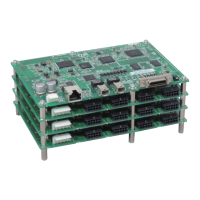
